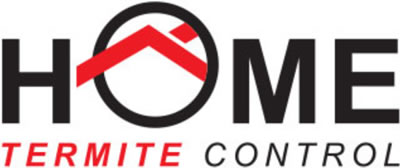Your Ultimate Guide to a Thorough Termite Inspection
Homeowners should pay attention to termites, which can cause considerable destruction if left untreated. This article provides a comprehensive overview of the subject, including information on recognizing signs of infestations, preventive measures for preventing them, and what is involved in a professional inspection. It discusses potential treatments, such as pest control techniques, to mitigate damage caused by these pests.
Key Takeaways
- Understanding termite species and habits is key to effective control.
- Regular inspections are essential for detecting signs of infestation, preventing damage, and maintaining property value.
- Homeowners can reduce the risk of an infestation by managing moisture levels, using resistant building materials & scheduling regular inspections.
Understanding Termites: Species and Habits
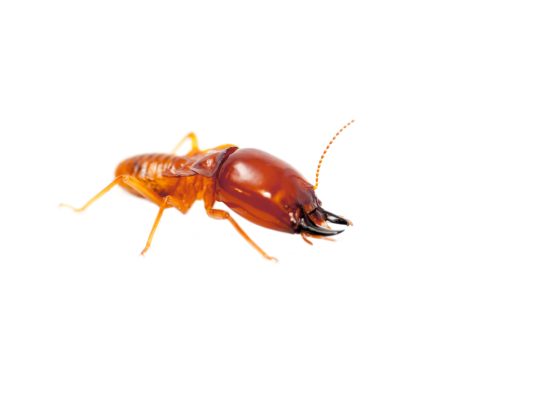
Termite species vary significantly, and their length typically ranges from 0.3 to 1.5 cm. They can form new colonies through a process known as budding, which involves certain parts of the colony becoming autonomous, with up to 500 000 termites present in one such nest at any given time, making them truly fascinating insects!
They demonstrate an extensive range of behaviors when looking for sustenance and defending their habitats. At the same time, some species even employ scouting parties made up of worker termites along with soldiers that travel extensively underground searching for food sources.
In order to control them, we need all the valuable knowledge employed against these bugs.
Having said that, termites are also essential within natural ecosystems because of how they consume dead plant material, aiding effective waste disposal processes, thus Highlighting just why we need our precious little termitetoriums intact!
Subterranean Termites
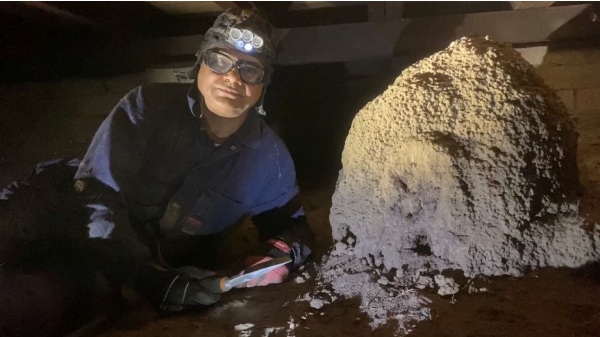
Subterranean termites are different from other species in that they create underground colonies and construct mud-tubes above the soil surface to protect their active members while seeking food. Through sophisticated tunnel networks, these bugs persistently search for sustenance, which can cause extensive damage to timber structures – making them Australia’s most troublesome type of termite. It is a good idea to consult with a qualified timber pest inspector when determining the presence or absence of such pests on your property.
Drywood Termites
Drywood termites are known for their complex social structure and specific features, including swarming winged reproductives from small cracks in the wood. They often affect untreated softwoods such as pine, cedar, cypress or fir and can cause extensive damage to household furniture or other structural elements in a home.
Indications that you may have a drywood termite infestation include piles of sawdust-like pellets, vast amounts of flying insects hovering around wooden items, and wings discovered on window sills or surfaces close to wood materials. Like drywood termites, subterranean termites swarm and drop wings during hotter months of the year.
Identifying early signs of an issue with these kinds of pests is important to prevent severe destruction – and more costly solutions – down the line. Regular checks help ensure your house remains free from any potential issues caused by these destructive bugs!
Generally, we don’t see Drywood termites in Sydney except on rare occasions when the insects are imported through furniture from overseas. I encountered this once during my inspection. The homeowner has bought an expensive table from a Pacific island where drywood termites were infesting. That was such a heartbreaking case as she had to spend a lot of money ensuring that they could not infest any further.
Dampwood Termites
Dampwood termites, such as Porotermes adamsoni, are one of the largest type of termite in NSW and they don’t construct shelter tubes. These pests usually inhabit well-aged wooden structures in damp subfloor areas with temperatures around 20 to 25°C. As opposed to other species of termites, which can be a nuisance for homes, these critters target decaying timber, making them more easily managed through frequent inspections. Allowing prompt corrective measures such as improving drainage and ventilation.
Signs of Termite Infestation
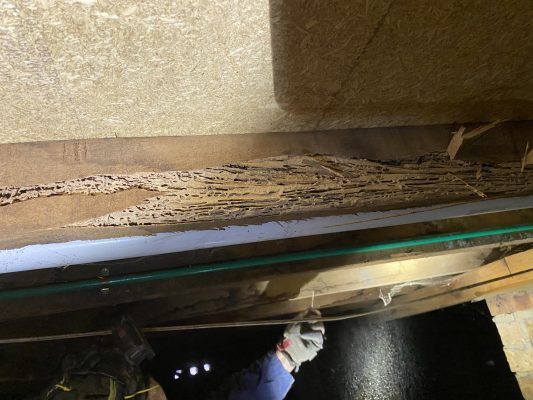
Identifying the signs of a termite infestation is essential for early detection and control. These indications include damaged wood, mud shelter tubes (constructed by termites to protect themselves from predators), and discarded wings from alates (winged members). This implies an active colony that needs attention immediately.
Distinguishing between damage due to water versus those caused by termites is imperative. They are characterized differently, with wavy grooves or holes associated with insects rather than swelling in case of moisture-related destruction. Termites will also leave empty wood casings that can be confirmed by tapping to it, so look out for these clues if you suspect activity near your property!
Damaged Timber
When you tap or knock on timber, and it gives off a hollow sound, it could be evidence of termites inside. Hollowed-out surfaces in the wood may also indicate that these insects have been present. Termite-infested wood is always weaker than non-infested wood or timber infested by other bugs.
A proper inspection for active termite activity can assist in detecting them early so corrective measures can occur promptly when needed. Regular checks should be done to make sure these tiny destroyers aren’t infiltrating your property!
Mud Shelter Tubes
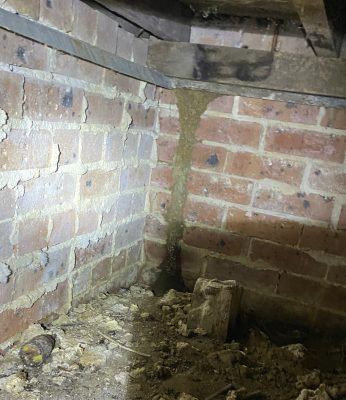
Termites use wood matter to construct mud shelter tubes, which form tunnel-like structures that provide protection against predators and environmental factors. This process involves mixing soil, pieces of timber and saliva and their poo together to create enclosed pathways with a humid atmosphere suitable for the foraging termites. It is important to conduct regular examinations to detect any active colonies that could cause issues so corrective actions can be undertaken promptly.
Discarded Wings
The presence of discarded wings in a household often signals that alates, or winged termites, have taken to the air and are looking for suitable environments to find new colonies. Such signs might point toward an existing termite infestation around your residence. Thus, regular inspections should be conducted to recognize active pests swiftly to apply appropriate solutions quickly. Spotting evidence near windowsills, doors, patios, and other places may hint at a possible problem with present-day termites.
The Importance of Regular Termite Inspections
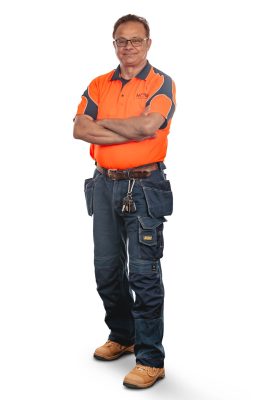
Termite infestation can be an issue that should not be taken lightly, as it is vital to recognize and tackle it quickly. Doing so promptly will ensure the prevention of additional damage inflicted on structures, enabling homeowners to save time and money they would otherwise have spent on repairs. Detection at an early stage allows them to address the situation before its magnitude increases – resulting in less costly resolution methods being employed.
The possibility of experiencing such termites depends on various circumstances, including moisture and drainage issues of your property, location (areas with a high concentration of trees like Sydney Northern Beaches) and properties near bushes, which serve as potential sites for these creatures to migrate into surrounding wooden constructions.
Risk Factors
Areas near the water in Sydney and the east and west coasts of NSW are especially prone to termite infestations. Materials used for construction increase the vulnerability. Wood entices them with its high cellulose content. Moisture can worsen any potential danger these pests pose; humidity creates optimum conditions for their survival while reducing the strength of timber, which is more susceptible to damage caused by termites. Consequently, it’s wise to do regular inspections on the property, looking out for particularly active signs of termites.
Early Detection
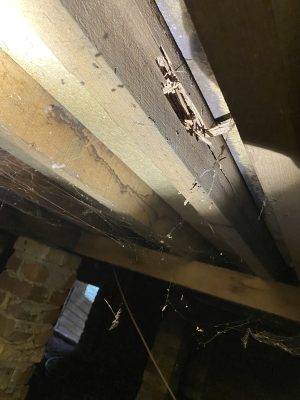
Timely detection of termite activity is necessary to initiate steps for controlling the infestation and minimizing destruction. Doing so can help homeowners minimize spending, save money on repairs, and limit their need for costly treatments. Recognizing a problem early with termites means they can manage it efficiently and cost-effectively.
What to Expect During a Professional Termite Inspection

To control termites, conducting a professional inspection of the property is essential. During this comprehensive investigation, an experienced inspector will assess signs of activity and damage caused by these pests as well as locations which could potentially harbor future infestations. The assessment takes 1-2 hours, depending on how big or complicated the building structure is.
The result should provide details about any inspected areas that may be exposed to attack. Include findings from the examination and advice regarding suitable treatment options for prevention when necessary.
Areas Inspected
To determine if a home is infested with termites, inspectors must investigate designated areas such as subfloors, roof voids, door frames and crawl spaces for possible invasion by the pest. All exterior parts, like fascia boards, need examination, too, in order to spot wood damage or mud tubes that suggest termite activity around the residence.
When performing an outdoor inspection, it’s important to look at how conducive the environment is. Check whether there are excessive amounts of overgrown vegetation near exterior walls or identify leakage issues inside drains, etc.as this could easily trigger colonies from trees close by.
Tools and Techniques
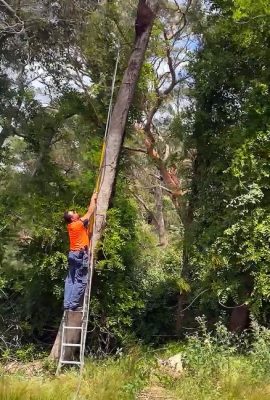
Intermittent termite examinations call for the use of specific tools, including borescopes, moisture meters, thermal imaging cameras and sounding devices. These are employed to analyze a property and identify any sign or indication of the presence of termites. The Termatrac is also considered a popular tool due to its precision when assessing relative and direct humidity levels during an inspection. Infrared technology incorporated into these cameras makes scanning through structures’ walls possible. Sounding instruments also commonly serve professionals by tapping on woodwork to detect pest infestation. An experienced inspector will also rely on his visual information while scanning the property.
Inspector Qualifications
Someone wishing to become a professional termite inspector requires relevant qualifications and licensing, as well as an appropriate apprentice experience under a licensed inspector. These specialists get specialized instruction in termite biology, identification processes, behaviour patterns of these insects, control strategies and aspects related to building construction. The ideal candidate typically needs at least two years of experience in this field. More is preferable so they can gain an understanding that includes local species habits like habitats or signs identifying their presence with accuracy, allowing for proper solutions, including treatments and prevention methods.
Termite Treatment Options
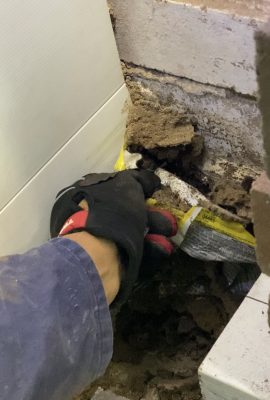
When dealing with a termite infestation, there are several treatments to consider. These include chemical barriers, which involve applying termiticide underneath the concrete flooring or around the foundation of a structure. Baiting systems using bait stations contain an IGR that eliminates termite colonies witout locating them. And physical deterrents designed to keep them from entering dwellings. The optimal choice for any specific technique depends on factors such as inspection results, species of termite and hazardousness levels, among other considerations. Physical barriers require little maintenance while forcing out-of-sight termites into plain view so their presence can be identified more easily than if no barrier was present in most cases.
Chemical Barriers
Chemical barriers form a protective boundary around structures vulnerable to termite infestations. Repellent termiticides, such as Bifenthrin, and non-repellents, like Fipronil, can create chemically treated zone areas of soil. When setting up chemical defences on concrete foundations, it is necessary to inject chemicals into drilled holes in the foundation, this ensures uninterrupted coverage from pests down the road. Putting out these safeguards prior construction will significantly reduce the chances of future insect invasions.
Baiting Systems
Termite baiting systems are designed to eradicate entire colonies using specific toxins acting as insect growth regulators. These substances, such as chlorfluazuron and hexaflumuron, stop the termites from molting, which consequently leads to their demise. The process starts with strategically placing bait stations around areas where they have been actively feeding. When these insects eat the toxin-ridden food, it is taken back to its colony and spread among other members, this could take several months up until a year, depending on factors like population size, species and time of the year.
Physical Barriers
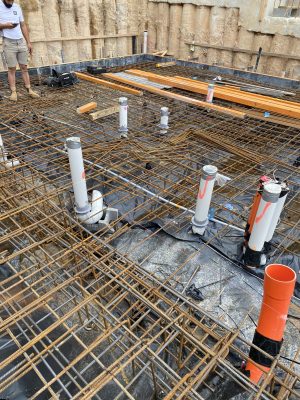
Physical barriers for termite prevention are an essential measure taken during the building process to prevent any access of these pests through hidden pathways. This method includes applying granules, metal sheeting and mesh, and systems like Kordon, Granitgard, Termseal or TermiMesh.
The installation of physical deterrents against termites consists of placing barrier materials such as sand grains or a specialist system underneath a slab foundation – this will block off every possible entryway from invading insects into the property’s structure itself. Physical defences are extremely helpful in avoiding damage caused by infestations. Some of them act both as damp-proof courses and termite barriers.
Preventative Measures for Homeowners
Homeowners can employ a range of strategies to avert termite infestations. These preventive measures include moisture control, using building materials that are less vulnerable to attack by pests and scheduling regular inspections for potential activity of the insect species. It is important to manage water properly, such as fixing leaks, providing enough ventilation and upholding adequate drainage, significantly reducing the risks of termites invading.
To decrease the likelihood of possible termite invasion, using resistant material instead of timber in construction works is advised. Avoid direct contact between timbers & ground levels, plus do frequent evaluations for early identification signs from these creatures if present on site. By abiding with all those steps, you may prevent major damages or costly repairs, ensuring your property’s long-term protection against possible hazards by this kind of pest!
Moisture Control
Termite infestations, particularly in Sydney suburbs, are caused by excessive moisture, which provides the perfect habitat for termites to live, breed and feed. Factors like leaks, inadequate drainage and lack of ventilation can worsen this problem as it weakens wood structures, making them more vulnerable to pests such as termites. Sources of dampness that attract these colonies include water-logged regions with damaged pipes or improper draining issues. Solutions should be applied right away to prevent having a surplus amount of moist air in the house. Installing exhaust fans in the subfloor ought to increase overall airflow through good ventilation practices while also addressing any plumbing problems simultaneously.
Resistant Building Materials
A variety of materials can be used to aid in preventing termite infestations and damage. These include redwood, chemically treated products, fireproof cladding or bamboo decking for outdoor structures. For steel framed constructions, cold formed (CFS) or light gauge steel (LGS) should be employed to provide immunity from destruction caused by these pests. Regular checks must take place so that active present populations can quickly be identified and resolved at once using suitable strategies against them.
Regular Inspections
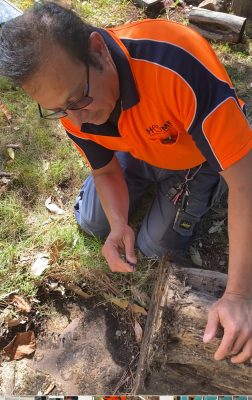
Routine termite inspections are an important step for homeowners in preserving structural integrity and protecting the market value of their property, as well as giving them assurance there is no termite activity present. The inspection includes a detailed visual survey of accessible areas inside and outside the house to detect signs such as wall or floor damage that might signal the presence of active termites. Depending on size, this procedure typically lasts two hours. Routine checks help identify existing infestations so immediate solutions can be implemented, effectively preventing any potential harm due to these pests.
Summary
To avoid the costly damage that termites can cause, homeowners should be aware of the signs and species of these pests and take preventative measures such as proper moisture control. Regular professional inspections are also essential for identifying and treating potential infestations in their early stages. Termites are a crucial part of nature’s balance, but it is important to be proactive in preventing them from wreaking havoc on your home or property.
Frequently Asked Questions
How do you check for termites?
When looking for termites, it can be helpful to keep an eye out for mud trails on the outside walls of a building, dark discolourations on interior surfaces, fluttering wings of swarms near windowsills and woodpiles as well as check if any timber is decayed or you hear clicking sounds from within your walls.
How much does a termite inspection cost in Sydney?
A termite inspection for an average-sized property in Melbourne typically ranges from $298 to 450.
What is the most effective treatment for termites?
The answer depends on many factors, including the termite species, type of structure and more. Your termite inspector should be able to answer that question after a full inspection.
What is the significance of regular termite inspections for homeowners?
Homeowners should always ensure that regular termite inspections are conducted to identify any infestations quickly, stop potential extensive damage and exorbitant repairs, maintain the structural strength of their property, protect its resale value and guarantee that no termites have infiltrated.
